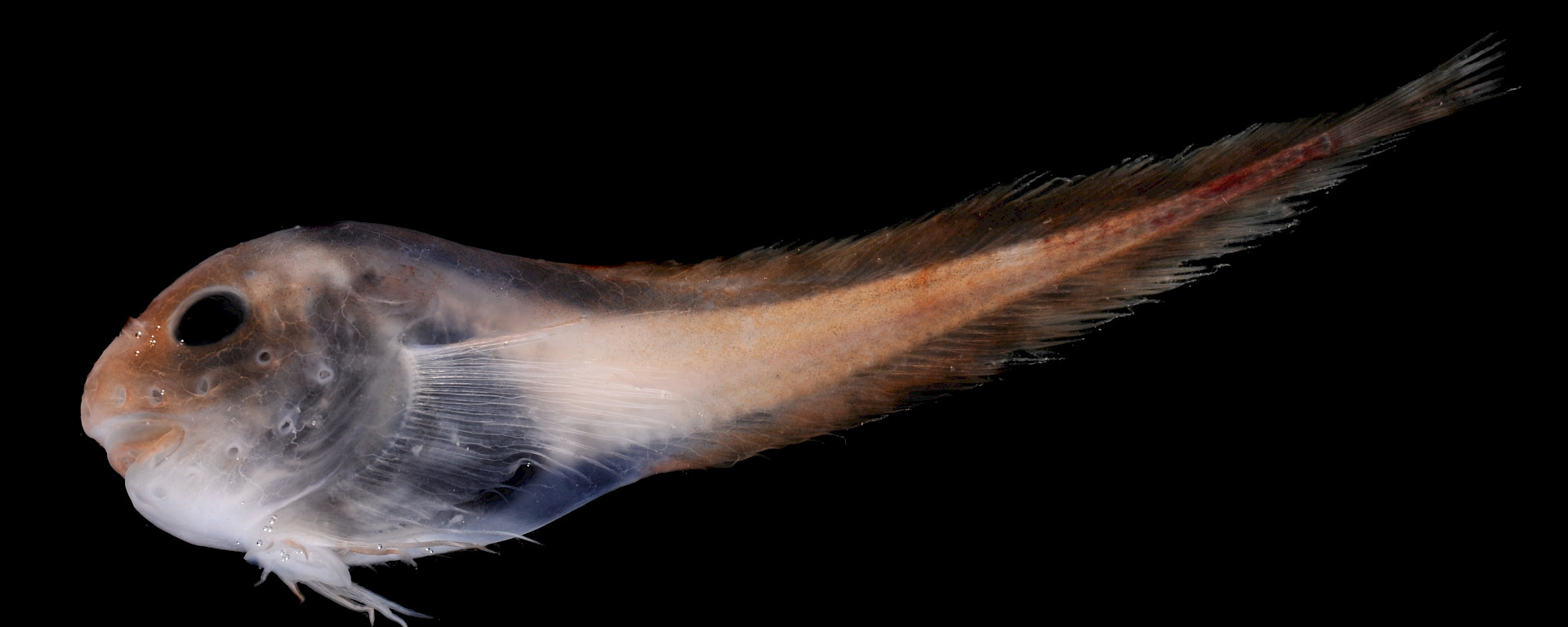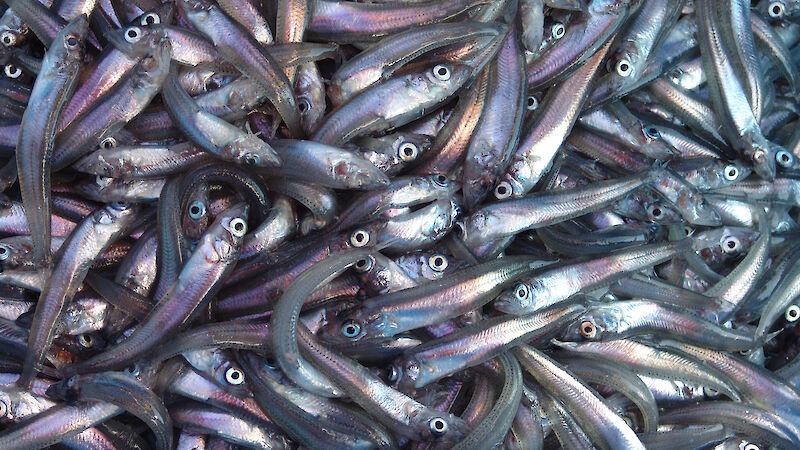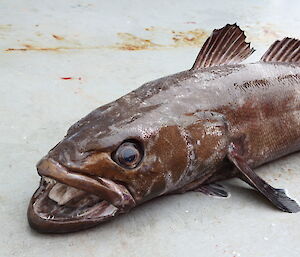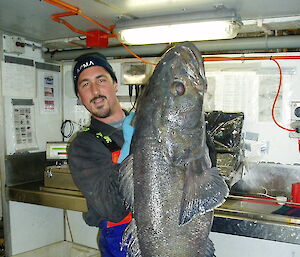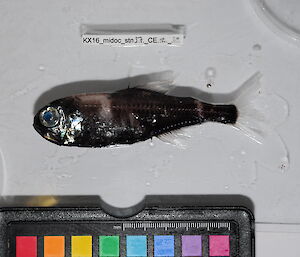Mackerel icefish
The mackerel icefish (Champsocephalus gunnari) is in a group of species known as ‘white-blooded’ fishes. This group is only found in the Southern Ocean. They do not have the red, oxygen carrying pigment haemoglobin in their blood cells. This means their blood is colourless.
Mackerel icefish grow to 44 cm long at the Heard and McDonald Islands. They are thought to live 4 to 5 years.
This species is mainly found around the Heard Islands, McDonald Islands, Îles Kerguelen and islands in the south Atlantic (such as South Georgia). Mackerel icefish was once the most abundant species found near shore in waters less than 400 m. Declines in population sizes in the 1970s and 1980s are linked to overfishing.
Icefish form schools and migrate each 24 hours. They spend the day near the seafloor, feeding on plankton and small fish (including juvenile icefish). They spend the night in midwater.
Icefish are an important food for many seabirds, seals and large fish.
Antarctic cods (Notothenia)
One of the most abundant groups are the Notothenioids. They are also referred to Antarctic cods, although they are not true cods. These fish have an antifreeze in their blood which stops it from freezing despite their proximity to the ice.
Antarctic toothfish and Patagonian toothfish
Toothfish can grow up to 2 m long and weigh 100 kg when fully grown. They can live up to 45 years.
There are 2 species of toothfish:
- the Antarctic toothfish (Dissostichus mawsoni)
- the Patagonian toothfish (Dissostichus eleginoides).
The 2 species are very similar in appearance and habits. The Antarctic toothfish is found in the high latitude region close to the Antarctic continent. The Patagonian toothfish is found in sub-Antarctic waters on shelves around islands and submarine banks.
Distribution
Toothfish are bottom-living, in depths of 100 m to 3,000 m. They occasionally move off the bottom to feed.
The Antarctic toothfish has antifreeze proteins in its tissues and blood. These proteins mean that it can live in water colder than the normal freezing point of tissue. The Patagonian toothfish does not have these proteins because it lives in warmer water.
Breeding
Toothfish reach sexual maturity when they are between 70 cm and 95 cm long. At this size the fish are between 8 and 10 years old.
Toothfish eggs and larvae are pelagic (free swimming/floating near the sea surface). The larvae feed on zooplankton.
Diet and predation
Toothfish eat small fish and squid in midwater and a range of fish, crabs and prawns on the bottom.
Few species have been recorded as having toothfish as a large part of their diet. Some known toothfish predators include:
- black browed albatross that forage for juveniles around Îles Kerguelen
- southern elephant seals and Antarctic seals at Heard Island that occasionally eat toothfish
- some sperm whales captured near Antarctica during the 1970’s that had large toothfish in their stomachs
- killer whales that have been filmed eating toothfish when they are caught on longlines around Île Crozet.
Illegal fishing
Illegal fishing of the Patagonian toothfish was a very serious problem in the late 1990s and early 2000s. In 1997–98 about 11,000 tonnes were caught legally in the CCAMLR area – but the illegal catch was estimated to be 32,000 tonnes. In some areas illegal activities have reduced the stocks of toothfish markedly.
Careful regulation, monitoring and significant enforcement activities by countries such as Australia and France have seen illegal, unreported and unregulated (IUU) fishing for toothfish fall to near-zero levels in waters under national jurisdiction. Elsewhere in the CCAMLR Area, IUU fishing still persists.
The Coalition of Legal Toothfish Operators (COLTO) is an organisation of legal industry members who work with conservation groups, national governments and CCAMLR, to improve fisheries resources management and eliminate IUU fishing for toothfish.

